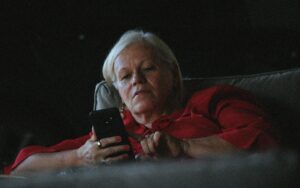July 5, 2018

On June 29, 2018, the United States Court of Appeals for the Second Circuit issued a decision following the reasoning of the D.C. Circuit Court of Appeals’ recent decision rejecting, as unclear, the interpretation of the definition of an automatic telephone dialing system (“ATDS” or “autodialer”) that had been employed by the Federal Communications Commission (“FCC”) in its 2015 Order interpreting the Telephone Consumer Protect Act (“TCPA”).
The TCPA prohibits the placing of any call using an autodialer to any telephone number assigned to a cellular telephone service, without the receiving party’s prior express written consent. Such calls are also prohibited by the TCPA after a receiving party has revoked her/his prior express written consent to receive such calls. The TCPA defines an autodialer as “equipment which has the capacity (A) to store or produce telephone numbers to be called, using a random or sequential number generator; and (B) to dial such numbers.” 47 U.S.C. § 227(a)(1).
We have previously blogged about the D.C. Circuit Court’s recent decision in ACA Int’l v. FCC, which vacated various aspects of the FCC 2015 Order interpreting the definition of autodialer (the “ACA Decision”). Among the reasons for vacatur was the FCC’s lack of meaningful, reasoned guidance as to the meaning of the phrase “using a random or sequential number generator,” including whether the device, itself, must have that capacity.
In the Second Circuit case, the plaintiff, Araceli King (“King”), sued Time Warner Cable Inc. (“Time Warner”) under the TCPA for placing approximately one hundred and sixty calls to her cell phone in an effort to collect on a delinquent account. As a Time Warner customer, King had provided consent to be called by Time Warner as part of her terms of service. Soon after King began receiving calls about a delinquent account — her phone number had been erroneously associated with the account of a different (delinquent) customer — she asked Time Warner to stop calling her about the other customer’s account. But approximately one hundred and fifty more calls from Time Warner were received, and many were made even after she had commenced litigation.
In placing the subject calls, Time Warner used an interactive voice response (“IVR”) calling system which had the capacity to store numbers and dial them. However, Time Warner contended that its calling system did not have the capacity to make random or sequentially generated calls.
Summary judgment was granted by the District Court in favor of King with respect to liability under the TCPA for the calls placed after she had allegedly told Time Warner to stop calling her (i.e., after she had revoked consent to be called). Time Warner appealed, and the Court of Appeals for the Second Circuit held its appeal in abeyance pending the ADA Decision.
After the ADA Decision was rendered, the Second Circuit elected to follow the D.C. Circuit’s reasoning and, consequently, vacated the award of summary judgment and remanded the case back to the District Court to make factual findings with respect to the autodialer issue.
Why did the Second Circuit follow the D.C. District Court with respect to its interpretation of the definition of an Autodialer?
In ACA Int’l v. FCC, the D.C. Circuit Court rejected the FCC’s interpretation of what functions dialing equipment must be capable of performing in order to be considered an autodialer under the statute. The D.C. Circuit Court also found that the FCC was not clear in the 2015 Order as to whether dialing equipment must be able to generate random or sequential numbers in order to be considered an ATDS. The Second Circuit found that while the D.C. Circuit Court was only deciding whether the FCC’s interpretation was reasonable, its analysis was informative. Specifically, the Second Circuit found persuasive its conclusion that dialing equipment that could have the capacity to make calls to random or sequential numbers only via software changes or updates would impermissibly expand the TCPA’s intended reach. In concluding that dialing equipment must have “current functions” — absent any modifications to its hardware or software — that would qualify it as an autodialer, the Second Circuit employed the ADA Decision to reach a narrow interpretation of the definition of an autodialer within the meaning of the TCPA.
The Implications of the D.C. Circuit’s Autodialer Decision Continue to Grow
We predicted that the D.C. Circuit Court’s ruling would be pivotal in providing a useful tool in defending against TCPA lawsuits. The King v. Time Warner decision is another potent example of how more courts are using ACA Int’l v. FCC to apply reasoned, common-sense interpretations to TCPA provisions. Notwithstanding the foregoing, the ever-changing telemarketing landscape makes it critical to have telemarketing practices and procedures examined by experienced counsel.
If you are interested in learning more about this topic or need TCPA-related assistance, please e-mail us at info@kleinmoynihan.com or call us at (212) 246-0900.
The material contained herein is provided for information purposes only and is not legal advice, nor is it a substitute for obtaining legal advice from an attorney. Each situation is unique, and you should not act or rely on any information contained herein without seeking the advice of an experienced attorney.
Attorney Advertising
Related Blog Posts:
TCPA Lawsuit Tests Definition of Autodialer after ACA Intl



